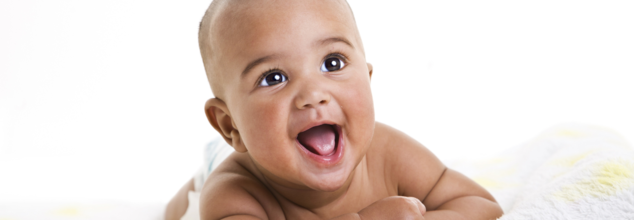- Health Conditions A-Z
- Health & Wellness
- Nutrition
- Fitness
- Health News
- Ayurveda
- Videos
- Medicine A-Z
- Parenting
- Web Stories
People Do Carry Memories Of Infant Years, They Just Don’t Remember Them

(Credit-Canva)
Memories of a child growing up are a few of the most profound moments in a parent’s life. For the longest time we believed that kids could not form memories at that time, but a new study has found something very interesting. They found that even very young babies, around 1 year old, can actually form memories. This suggests why we may not remember being babies might be more about not being able to recall or keep those memories, rather than not making them in the first place.
Infantile amnesia is a period of childhood that adults cannot remember, and this is said to occur in the first few years (0-3 years) from birth.
Scientists used to think that a part of the brain called the hippocampus, which helps adults remember specific events, took too long to develop in babies. Because of this, they thought babies couldn't really form memories. But this new research published in the Science journal 2025 shows that the hippocampus is involved when babies make memories. This means that specific things that happen can get stored in babies' brains. So, maybe we don't remember being babies because those memories get lost, or we just can't get to them anymore as we grow up. Other studies hint that those baby memories might still be there, just hidden.
How Did Researchers Find That Babies Still Remember?
To see how babies' brains work when they see things, the researchers used a special kind of brain scan called functional magnetic resonance imaging (fMRI). This machine is safe and measures how much blood flows to different parts of the brain, which tells us how active those parts are. They showed babies pictures of outdoor places, faces, and toys while they were in the fMRI scanner.
These scans were done when the babies were awake. They showed babies a colorful, moving background to keep them interested. Then, they showed them pictures they had never seen before, like a dog toy, a mountain, or a woman's face. About a minute later, they showed the baby the same picture next to a new one from the same type of thing to see which one the baby looked at more.
What they found was astonishing! While the researchers believed the babies would take time to remember, they recognized the pictures quickly! When babies looked more at the picture they had seen, there was more activity in their hippocampus, showing that this part of the brain was involved in making that memory.
Why Are Baby Memories Important?
Experts believe this could be the building blocks for baby growth and development. These early memories help them learn and understand things, form close bonds with people, and build relationships. They also affect how babies develop emotionally and socially.
Early memories also help babies learn basic skills like moving, talking, and reacting to different situations. Even though babies won't remember these specific moments later, these early experiences shape how they understand the world and how they interact with others as they grow. Even though babies don't have memories they can consciously recall, their brains need strong emotional and sensory experiences to develop properly.
Doctors Warn of Rising Congenital Syphilis After 3 Babies Died In New York, Are Missed Screenings To Blame?

Credits: iStock
Health officials across the United States are sounding an urgent alarm and a warning about congenital syphilis, a previously uncommon reason for infant mortality, continues its upswing. In 2023, the Centers for Disease Control and Prevention (CDC) reported 3,882 cases, the most since 1992. In 1992 alone, 279 babies died from the infection or were delivered stillborn, with 252 of them listed as stillbirths—a 6.3 percent rise from 2022.
The country's congenital syphilis rate is currently 105.8 cases per 100,000 live births, a three percent rise from last year. Experts cite the increase mainly due to loopholes in prenatal care, inadequate screening, and lacking follow-up treatment during pregnancy.
What Is Congenital Syphilis?
Syphilis is a sexually transmitted disease produced by the bacterium Treponema pallidum. The primary signs are sores in the location of infection, usually the genitals or mouth, whereas secondary syphilis may present with rashes on hands and feet.
Congenital syphilis takes place if a pregnant mother passes the disease to her unborn child, which might lead to severe complications. These may involve bone abnormalities, jaundice, skin rashes, neurological complications, and even in extreme cases, stillbirth or death of the infant. According to the World Health Organization, 1.5 million cases of congenital syphilis are estimated worldwide each year.
Fortunately, syphilis and congenital syphilis are preventable using condoms and can be treated using penicillin. Unattended cases, however, have disastrous and permanent effects.
What Is Behind The Spike In Congenital Syphilis?
Evidence indicates that much of congenital syphilis is a result of failed screenings and untreated infections. Across the country, 43 percent of birth parents were not screened for syphilis during pregnancy, and 23 percent of the infected were not treated. Gaps in 2022 accounted for almost 90 percent of congenital syphilis.
Unscreened or untreated sexual partners further contribute to the issue. "Early detection is the key," asserts Dr. Jim Saperstone of Community Care Pediatrics. "Syphilis, if left untreated, can affect a newborn's brain, heart, eyesight, and development.
New York State has experienced an alarming increase in the number of cases, with three infant fatalities reported in 2025 and 21 cases outside of New York City to date this year. The city alone had 35 cases in 2023. In reaction, officials in New York are pushing for mandatory blood tests for expectant mothers.
"No baby should ever die from syphilis in New York State or in this nation," said State Health Commissioner Dr. James McDonald. He points out that early diagnosis by easy blood tests is key to quick treatment and healthy results.
Hotspots and national trends
Although New York is precarious, the most elevated rates of syphilis and congenital syphilis reside in states such as South Dakota, New Mexico, Mississippi, Arizona, and Texas. Such states have the highest rates per 100,000 live births, making them priority targets for public health initiatives.
The CDC states congenital syphilis cases can be prevented but are made difficult by structural issues like a shortage of prenatal care, reduced access to testing, and nationwide deficiencies in the specialized penicillin treatment. Pfizer, the only company producing the penicillin formulation given to pregnant women, already has a national shortage, leading officials to ration its availability for congenital cases.
Why Screening Is Equal Way Part Of Prevention?
Syphilis testing is universally recommended by every U.S. state in the first trimester, but the recommendations differ for third-trimester and post-birth periods. Eighteen states recommend testing in the third trimester, nine suggest testing after birth, while just eight require screenings at the time of delivery. Experts emphasize that early screening, regular follow-up, and compliance with treatment are the best methods to avoid congenital syphilis.
"Early involvement with healthcare providers is key," Dr. McDonald said. "Blood tests during the first trimester, again at 20–32 weeks, and close to delivery should be given to pregnant women. The use of condoms also decreases transmission risk."
Medical education and awareness
In response to increasing cases, the U.S. Department of Health and Human Services, Office on Women's Health, introduced a new continuing medical education (CME) course: "Syphilis and Congenital Syphilis on the Rise – How to Protect Your Patients." The course provides practicing physicians, nurses, and pharmacists with effective strategies for screening, diagnosis, and patient-centered care. Physicians learn how to put guideline-based recommendations into practice, recognize key screening opportunities, and deliver empathetic treatment to infected families.
The rise of congenital syphilis also points to gaps in public health infrastructure, especially in prenatal care and follow-up treatment. Though most cases can be prevented with screening and penicillin treatment, shortages and uneven test schedules expose many newborns to dangers.
Physicians and public health practitioners advise all pregnant women to visit their physician regularly for prenatal care, adhere to recommended testing schedules, and have their treatment completed if they are found to be infected. Sexual partners should also be tested and treated to avoid reinfection.
Punishing Your Children Could Be Harming Their Health: WHO

Credits: Canva
A new report from the World Health Organization (WHO) has shed light on a troubling reality: corporal punishment remains widespread and continues to cause serious harm to children’s health, learning, and overall development.
Despite global progress in child protection laws, millions of children still face physical punishment both at home and in schools.
The Alarming Numbers
Globally, an estimated 1.2 billion children between the ages of 0 and 18 are subjected to corporal punishment in their own homes each year. The data is stark. Across 58 countries, around 17% of children who had recently experienced corporal punishment reported being subjected to its most severe forms. These included being hit on the head, face, or ears, or being struck hard and repeatedly.
The practice varies greatly from country to country. Among children aged 2 to 14 years, self-reported rates by parents and caregivers showed a wide range. In Kazakhstan, about 30% admitted to using corporal punishment in the past month, while in Ukraine the number was 32%. At the higher end, the figures climb to 63% in Serbia, 64% in Sierra Leone, and 77% in Togo.
Also Read: Decoding Baby Cries: What Are They Really Saying?
Schools Are Not Exempt
The troubling reality does not end at home. Schools, where children are supposed to feel safe, are also common settings for corporal punishment. Across parts of Africa and Central America, roughly 70% of children face some form of physical punishment during their school years.
In contrast, the Western Pacific region reports lower rates, but still around one in four children experience it in educational settings.
No Benefits, Only Harm
Experts stress that corporal punishment offers no benefits for children, families, or societies. Etienne Krug, Director of the WHO Department for Health Determinants, Promotion and Prevention, emphasizes that the evidence is now overwhelming.
Corporal punishment places children at multiple risks without improving their behavior, development, or well-being. Instead, it undermines their growth and creates lasting damage.
Who Is Most at Risk?
The report, Corporal Punishment of Children: The Public Health Impact, points out that some groups of children are more vulnerable than others. Those with disabilities, children of parents who themselves experienced corporal punishment, and those whose parents struggle with mental health issues or substance abuse face higher risks.
Larger societal factors, including poverty, racism, and discrimination, also play a significant role in perpetuating the cycle of violence.
Long-Term Health and Developmental Consequences
The effects of corporal punishment are far-reaching. Beyond immediate injuries, it alters children’s biological responses. Repeated punishment has been linked to higher stress hormone levels and even changes in brain structure and function, which can hinder healthy growth.
In low- and middle-income countries, data show that children exposed to corporal punishment are 24% less likely to be developmentally on track compared to their peers.
The psychological impact is equally concerning. Anxiety, depression, low self-esteem, and emotional instability are commonly seen in children who endure such punishment. Unfortunately, these issues often continue into adulthood, contributing to higher rates of depression, substance abuse, and even suicide.
A Broader Impact on Society
The damage is not confined to individual children. On a societal level, corporal punishment can normalize violence.
Children who experience it are more likely to struggle in school, adopt aggressive behaviors, and as adults, engage in antisocial or criminal conduct. The ripple effects create a dangerous cycle of violence across generations.
Moving Beyond Legislation
While many countries have enacted laws banning corporal punishment, the practice persists. This shows that legislation alone is insufficient. WHO stresses that legal reforms must be paired with awareness campaigns, parental support programs, and training for teachers. Promoting positive, non-violent approaches to discipline is key to breaking this cycle.
Jana Duggar Announces Pregnancy At 35, Here's What New Mothers In Their 30s Should Pay Attention To

Credits: Instagram
Jana Duggar, 35, days after celebrating her first wedding anniversary with her husband Stephen Wissmann, announced that they are expecting their first baby. The 19 Kids and Counting star said that the baby is expected to arrive in January 2026 and that the couple is "counting down the days and eagerly looking forward to this thrilling new chapter".
As Duggar looks forward to this new chapter in her life, it does raise an important question: How safe is it to have your baby after 30?
As per the National Institute of Health (NIH), US (2022), 20% of women in the US are now having their first child after the age of 35. While it is the new trend, the NIH doctor Dr Alan Decherney, a fertility expert explains that "As women age, they are still fertile, but their odds of pregnancy are decreased because they are not making as many good eggs that will fertile and divide normally and turn out to be an embryo."
ALSO READ: Women Are Now Waiting More Before Becoming A Mother, Age Trend Shows Motherhood From 2016 to 2023
Is Getting Pregnant More Difficult After 30?
After age 30, a woman's fertility decreases ever year, notes the NIH July 2022 issue. It notes: "The number and quality of her eggs goes down until she reaches menopause."
However, experts do point out that getting pregnant in your 30s need not be a stressful affair at all times. As it is at this age when you experience more stability, and also someone you know who have a personal experience in handling one. Most important, you are more mature at this age, which you may not be in your 20s.
ALSO READ: Baby Born From 30-Year-Old Frozen Embryo Sets Record: Here's All That We Know About It
Are You Planning Your Pregnancy After 30s? Here's How To Do It Right
Quit Habits: If you are a smoker, or consume alcohol, this is a good time to leave it.
Reduce Stress: While pregnancy for some can bring stress, try to find activities that help you release it.
Healthy Weight: Ensure that your weight is right, reduce your waist to bring it to a healthy range for a healthy pregnancy.
Food Habits: Stop eating junk and start eating more whole grains.
Exercise: A sedentary lifestyle can impact negatively on the child. You do not have to do HIIT, however, regular easy workouts can make both the pregnancy and delivery easy.
What Women In Their 30s Should Be Ready For During Pregnancy?
Dr Michelle Y Owens, professor of obstetrics and gynecology and a practicing maternal-fetal medicine specialist at the University of Mississippi Medical Center in Jackson, writes for the American College of Obstetricians and Gynecologists (ACOG) that "the longer your eggs have been around, the more likely they are to produce a pregnancy with a chromosome problem that can lead to a condition like Down syndrome. The risk goes up significantly after 35."
However, she says, there is a good news. Now, we have tools to detect and respond to pregnancy complications early.
READ: Expecting? Here's What The New Gestational Diabetes Testing Rules Mean For You
Why First Trimester Is Important For You And Your Baby?
As per the Johns Hopkins Medicine, your first prenatal visit is the most thorough, this is when your complete medical history is taken, physical examination is done and certain tests and procedures are performed to assess the health of both you and your child.
This is also the time when the fetus is most susceptible to damage from substances like alcohol, drugs and certain medicines, and illnesses like rubella, thus this is the most crucial time for the parents. First trimester is also the time when the baby undergoes a lot of development, while it may not be seen from the baby bump, however, the amniotic sac, placenta and the umbilical cord are all developed during this stage.
Since a lot of development happens during this stage, Dr Owens notes that this is why having a prenatal screening test during the first trimester helps you understand your baby's development and if your baby is at risk for any genetic disorders. "More frequent ultrasounds can measure the growth of the fetus and also look for birth defects. We’ll check your blood pressure at every prenatal visit, and we'll test you for gestational diabetes too. Early diagnosis plus treatment creates the formula for the best possible outcomes," she writes.
© 2024 Bennett, Coleman & Company Limited

